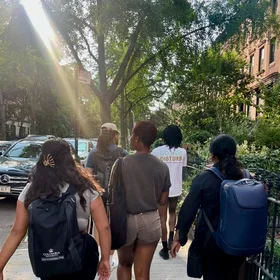When Narrative Medicine student Lilli Schussler was a second year medical student, a professor asked her about a time when she performed CPR in the past. Specifically, the professor wanted to know whether she had become “tired” in the process. Schussler suddenly found herself at a loss for words. She had not been tired; she was filled with the “numb quality of adrenaline,” because she had been performing CPR at home on her father. The challenge with the professor’s question, Schussler recalls, was that it assumed that Schussler’s experience was in a controlled hospital environment void of emotional factors. She replied to the professor that she was not tired, thinking “perhaps some in the room would be familiar with the way adrenaline can pierce the depths of exhaustion.” The professor simply told her she must have been doing CPR incorrectly.
For Schussler, this classroom experience highlighted a lack of consideration of “what it is like to code someone, and the reality we are likely to provide CPR without our white coats on—outside of a bar, at the scene of a car crash, in the home.” In a recently published article in JAMA Cardiology, Schussler challenges the conventional language of medical school, specifically “coding,” a term used to refer to patients in cardiopulmonary arrest or other types of emergencies. “Instead of reifying an artificial binary between physicians and patients,” Schussler argues, “the code should serve as a reminder that we also belong to the masses.” She points out that most cardiac arrests occur outside the hospital and may be “traumatic” for all parties involved. After a code, there are often short and long-term emotional consequences for both medical professionals and bystanders.
The article is one of her final projects for the Narrative Medicine course Public Writing and Public Health taught by Anjuli Raza Kolb, lecturer and author of Epidemic Empire. In the course, Kolb trains students to “write from qualitative research for a public audience,” as “the need for writers with cultural and narrative fluency in medicine is difficult to overstate.” The syllabus, consisting of various mediums such as books, films, journalistic pieces, and poetry, prepares students to write a “valuable opinion piece” as their final project. Students are also taught how to place and pitch their work, so Schussler put what she’d learned into action, and has now published her incredibly impactful story.
“We are formed in stories whose terms are dictated by language,” Schussler writes in “What We Talk About When We Talk About the Code.” She contends that “the words we use often circumscribe the possibilities we imagine and the actions we take” and suggests medical professionals consider applying this idea to their work. Knowing what she does now in Columbia’s Narrative Medicine M.S. program, she revisits the question her professor asked in medical school, asking the medical community: “Can we craft a more capacious question, one that endeavors to accommodate a broader range of experiences with out-of-hospital cardiac arrest?” Although Schussler admits “there is no blueprint for these conversations,” she posits that “imagination of such questions, and their answers, brings us a step closer to empathy.”
Read Lilli Schussler’s full article, “What We Talk About When We Talk About the Code” in JAMA Cardiology and learn more about Columbia’s Narrative Medicine M.S. program.


